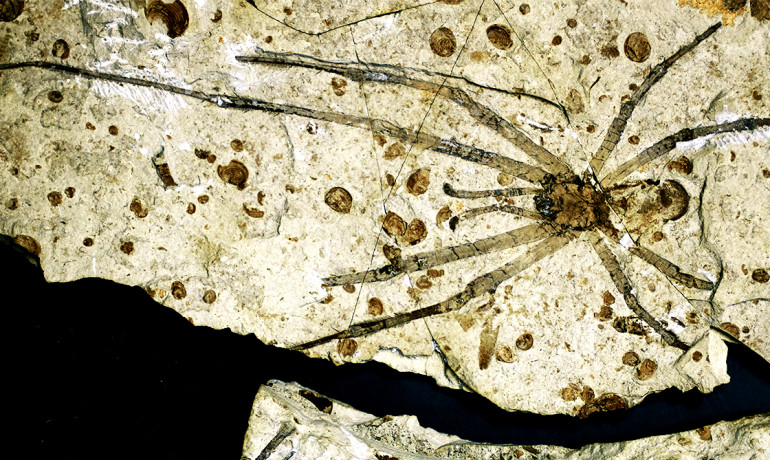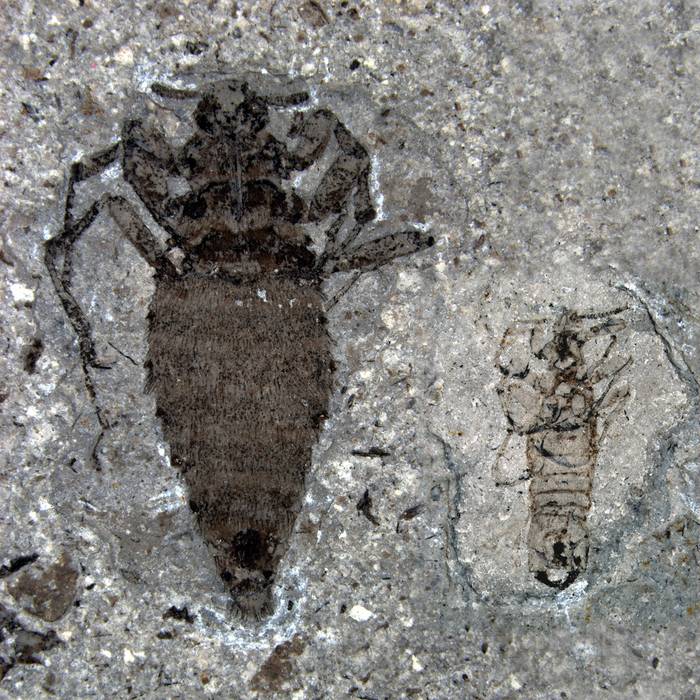The largest fossil spider they have discovered
2014/02/04 Jauregi Larretxea, Oihana - Elhuyar Zientzia Iturria: Elhuyar aldizkaria

It is from Jurassic times the fossil spider that they have recently discovered (between 199 and 145 million years). It has a length of 1.65 centimeters and one of the front legs measures 5.82 centimeters. It is the largest fossil spider of all findings and has appeared in the Chinese region of Inner Mongolia, at the Daohugou site. Naturwissenschaften magazine has released the discovery.
"The discovery is very significant," explains the researcher of Paul Selde-, "since it is the medium among the first primitive species that inhabited the earth and the best known brown spiders." Paul Selden is a researcher at the Department of Invertebrate Paleontology at the University of Kansas. Together with a group of scientists, he has been one of the researchers who has described the new fossil spider.
Throughout history, researchers have not found many fossil spiders from the Jurassic era. The first was discovered in Russia in 1984. The second was described three years later. Then, XXI. Until the twentieth century they have found no more.
In recent years, however, the peasants of Daohugou have found jurassic fossils on a hillside. Most of them have been insects, but spiders and other animals have also appeared.
The fossil spider they have discovered is a male that closely resembles a female fossil spider that was discovered a few years ago in that same spot. The female spider was initially considered as Nephila jurassica.
“However, some characteristics of the spider found do not correspond to the genus or to the Nephilidae family. That is why scientists have described a new family that takes the spider species,” explains Professor Paul Selden.
The conservation of fossil spiders is not usually good enough in many cases. Therefore, it is difficult to determine the species to which fossil spiders belong. Scientists should accurately study the hair, legs, and sexual organs of spiders.
However, the fossils of Daohugou have been preserved in good condition, since the accumulation of ashes of the local volcano has maintained all these small details. In this case, in addition, an electronic microscope has been used for the study of the fossil. This has allowed them to observe in greater detail some characteristics like the structure of the hairs, which has allowed them to identify the species.
Although the fossil of the female spider was part of the species Nephila jurassica, several scientists realized the rupture of the succession of the genealogical tree and, therefore, questioned this classification. These scientists proposed that the female spider was a primitive spider. The discovery of the male fossil and its concrete investigations confirm this hypothesis.
Researcher Selden claims that these spiders were the creators of many insects that lived during the Jurassic. The study on spider anatomy, in addition, has provided more data on its way of life and the climate of the time.

Gai honi buruzko eduki gehiago
Elhuyarrek garatutako teknologia





